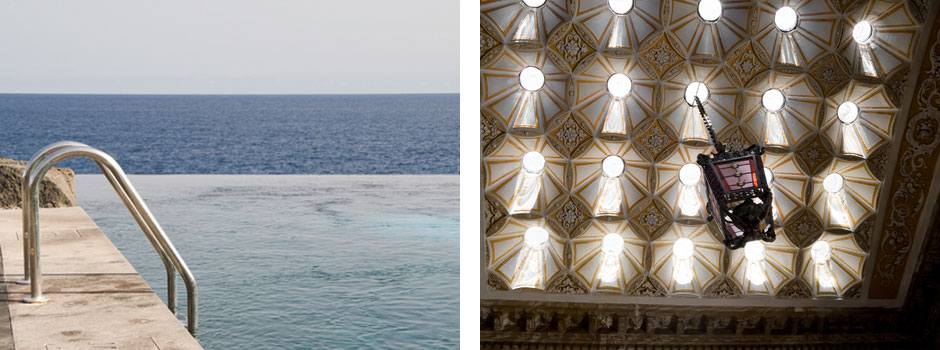
Even before the Roman times, natural thermal springs had made Turkey a center for “spa treatments.” Not only can one visit natural thermal baths that go back 2,000 or more years (for example in places such as Bursa and Pammukkale, but one can also enjoy some of the world’s best spas in Turkey’s top luxury hotels, and of course have the option to experience a historic Turkish Bath!
The tradition of the Turkish bath extends far back, to a time before Turks had come to Anatolia. When Turks arrived at the present-day Turkey around 1,000 A.D., they merged their bathing traditions with those of the Romans, the Byzantines, and other local groups, and in conjunction with the importance of cleanliness in the Muslim world, an entirely new concept, that of the Turkish bath, was born.
The Turkish Bath became an institution – for it was much more than just a place to cleanse the skin. It was part of everyday life, a place where people of every rank and station, young and old, rich and poor, townsman or villager, could come freely. Women as well as men made use of the hamam, as the bath is known in Turkish, although of course at separate hours. From the individual’s point of view, the hamam was a familiar place from the earliest weeks of life right up to its very end. Important occasions during a lifespan were, and in some township still are, celebrated with rejoicing at the bath. It was a place in which to mingle, socialize and gossip.
Many hamams were built during the Ottoman era, including about forty by the famous 16th Century architect Sinan himself! Externally, they generally have a distinctive domed roof with bottle glass directing beams of light inwards. The first room is the camekan, a square court with a fountain surrounded by small individual changing cubicles. This leads into a small sogukluk, or cooling off section, opening into the hararet, the hot and steamy, marble clad baths. A raised marble platform graces the center of the hararet. Known as the gobek tasi, or navel stone, it is positioned above the wood or coal furnaces which heat the hamam. The bather lies here for a vigorous massage or a kese, which involves the removal with a rough cloth glove of a lifetime’s worth of dead skin.
There is a range of equipment associated with a hamam visit. In fact, one might count 15 to 20 accessories that could be used in the process of a Turkish Bath. The pestemal, a large towel fringed at both ends and wrapped around the torso, from below the armpits to about mid-thigh, would be worn by a person as he/she made their way to the kurna or marble basin. The pestemal would be striped or checkered, a colored blend of silk and cotton, or pure cotton, or even pure silk. Additionally, the person would wear a pair of wooden clogs called nalin, or takunya, of which there were many varieties. Carved exquisitely, these clogs kept the wearer’s feet clear of the wet floor. They would be embellished in a number of ways, most often with mother-of-pearl, or even sheathed in tooled silver. The tas, or bowl, for pouring water over the body, was always of metal. Whether silver, gilt or tinned copper, or brass, the tas always had grooved and inlaid ornamentation. (It is interesting to note that there are very similar bowls from the Phrygian Kingdom, going back to 10,000 B.C.) One finds a soap case of metal, usually copper, with a handle on top like a handbag, and perforated at the bottom to allow water to run out. Not only soap goes into such a case, but also a coarse mitt for scouring down the skin, a webbing of date-palm or other fibers for lathering on the soap, and combs both fine and broad-toothed made of horn or ivory. The kese, that rough cloth mitt carried in the soap case, not only scoured the dirt out of the pores, but also served to deliver a bracing massage. There are three towels for drying: one to go around the hair like a turban, one around the shoulders, and one around the waist.
Leave a Reply
You must be logged in to post a comment.
